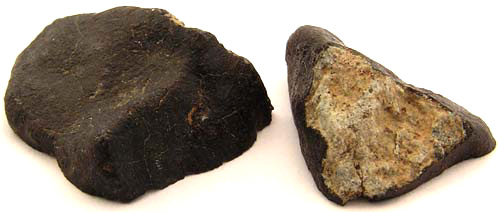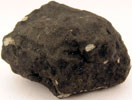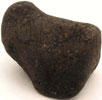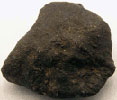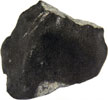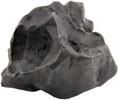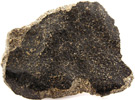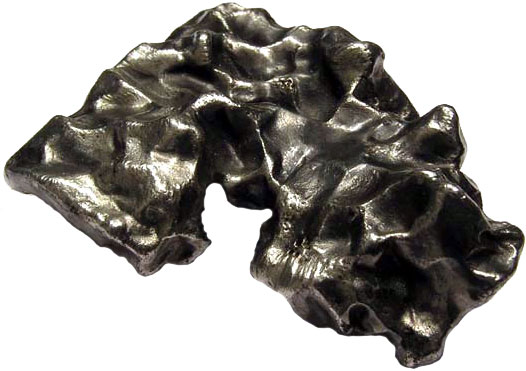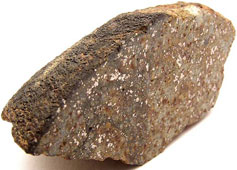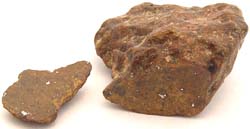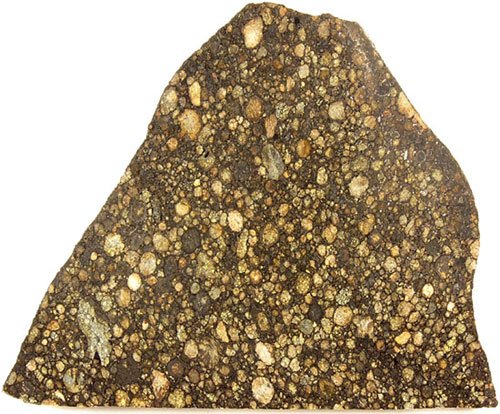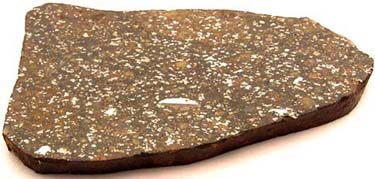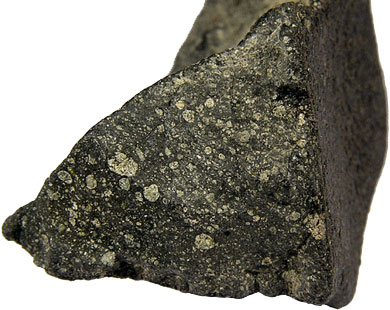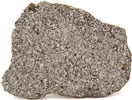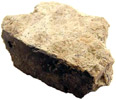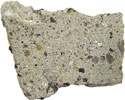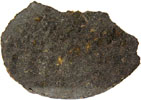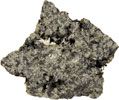


- Meteorites For Sale - Found A Meteorite? - Monthly Favourite - Meteorite Information - Classification List - Meteorite Collection - Media Centre - Home - Search - Site Map - Contact |
|
HAVE YOU FOUND A METEORITE? - If you've come to this page because you believe a stone you have may be a meteorite; then the information below may help you to identify the 'potential meteorite'. It is important to note that this information is a guide only! A meteorite can only be termed so, when it has been formally classified by a recognised institution. With that said, there are still a number of things that may indicate you have a meteorite which are listed below. If you are still not sure after looking at this page or you think you do indeed have a meteorite; please see details at page end.
There is a 'Glossary of Meteorite
Terms & Definitions'
here to help.
An Information Icon
(
Does the stone attract a magnet? If the answer to this question is "NO" then it is probably not a meteorite. Because of their high iron content, the vast majority of meteorites will attract a magnet. A good test is to dangle a magnet on a string and see if it is drawn towards the stone. If the magnet pulls towards the stone then you are on the right track. However there are still a lot of Earth rocks that will also attract a magnet, so this test is by no means conclusive. A very few meteorites will not attract a magnet, so read on and see if any of the other features are present. There's still a very small chance it could be a meteorite. Weight Is the stone 'heavy for it's size'? Because meteorites usually have a large iron content they are quite heavy. Even meteorites with a relatively low iron content will still seem quite heavy compared to Earth or terrestrial rocks of the same size. Some meteorites are made completely of metal. These are called Iron meteorites, usually abbreviated to "Irons" and are very heavy for their size. They are primarily a mix of iron and nickel. *Click here for a list of meteorite densities --> Surface Features / Colour Fusion Crust: When meteorites travel through Earth's atmosphere, they burn and form what is called a "Fusion Crust". The crust is usually black, grey to dark brown in colour. A weathered meteorite which has been on the ground for sometime will be more of a rusty/brown colour. Sometimes the fusion crust will have "Flow Lines" where the surface has melted and looks to have flowed around the meteorite. They look like fine wavy lines in the crust and will occasionally seem to originate from the front and stream towards the back. When meteorites hit the ground they will often chip parts of the crust off. Iron meteorites, when freshly fallen have a beautiful 'steely', blue/black fusion crust. Irons that have weathered will rust and form a rusty oxide layer. It may look like a lump of rusty metal and possibly flake at the surface. It could also be a mixture of these two things.
More fusion crust examples - click an image to enlarge.
Rounded Corners: Meteorites are rarely ever a ball or sphere type shape, but actually quite irregular. One point to note is that they will usually have rounded corners. Where the stones have large flat surfaces, it could be possible that it broke on entry and more specimens lay close by. Say within a kilometre or two! Notice the rounded corners in the fusion crust examples above. No Holes: Meteorites DO NOT have holes in the surface. Many people believe stones that appear 'bubbly' are meteorites. They are most likely just pumice, scoria or something similar to it and often of volcanic origin. These type of stones are also usually quite light in weight. The only occasion bubbling may be evident is with 'Oriented Meteorites'. Sometimes they will have frothing on the trailing edge of the freshly fallen meteorite. Regmaglypts or 'Thumb-prints': While meteorites don't have holes, sometimes they will have what are called "Regmaglypts" or more commonly 'thumb-prints'. If you could imagine the meteorite being a soft piece of dough or clay and you pressed your thumb into the surface, it would leave a shallow indentation. Generally speaking, if a meteorite has this feature, then the bigger it is, the bigger the 'thumb-prints' will be. Take note of the Sikhote-Alin meteorite below which shows this feature well.
Interior Colour: When a meteorite is sliced or broken, the exposed interior surface is sometimes referred to as the "matrix". Meteorites vary extremely widely when it comes to the matrix colour. They range from white to black, including red, orange, grey, tan/brown (common), silver (in Irons), yellowy or even a mixture of different colours.
Chondrules: Depending on the type of meteorite it could be, the interior could vary quite drastically. The most common is the Ordinary Chondrite which will generally show small round features called "Chondrules". (Pronounced: 'kon-drools') These can be different colours and sizes. Sometimes in weathered or broken meteorites, the chondrules may be exposed and evident on the surface. This gives the appearance of a bumpy surface unlike the crusts mentioned above. The links below provide a valuable insight into what chondrules look like. *A Pictorial of Type-3 Chondrites in the Meteorites Australia Collection ---> Metal: As previously mentioned, most meteorites have a high iron content. In ordinary chondrites, there are nearly always small visible iron flakes. Again this feature can also vary in size and shape, but visible iron such as this is a good sign. On Earth, iron is extremely rare in its free natural form and is only found in a few places around the world. The iron we see and use in our everyday lives, has to be manufactured and processed from iron ore. If the stone is completely iron inside then it is a positive sign, however you would need to ensure that you don't have an old rusty man-made object or by-product. Many, many people confuse old metal objects for meteorites.
RARE EXCEPTIONS Carbonaceous Chondrites: This is a very rare class in which some specific types would not display many of the above features. For example, Murchison which fell in Central Victoria, Australia in 1969. This meteorite basically has a black interior with very small white to grey coloured chondrules. These meteorites are one of those rare exceptions to the rule!
Achondrites: This name is given to meteorites which do not have chondrules and originate from different areas of the solar system. These meteorites vary quite widely and can have a pale chalky interior, sometimes with other coloured inclusions or shapes. They can have fusion crust, metal and other meteorite traits but will not have the chondrules. Examples of various "Achondrites" - click an image to enlarge.
Stony/Irons: These are RARE! If your specimen has any sort of 'crystal-type' pieces in the stone then it is probably not a meteorite. There is a rare class called Pallasites. Out of around the 30,000 different meteorites that have been found; less than 50 are Pallasites! If your stone has all of the iron meteorite characters AND contains crystals; it may be a Stony/Iron meteorite. The crystals are usually green/yellow to orange/black and can sometimes protrude through the surface. Examples of various "Stony/Iron" Meteorites - click an image to enlarge.
What To Do Now Or Still Not Sure? Don't forget to have a look through the other pages of Meteorites Australia such as the Monthly Favourites and the Meteorites Australia Collection. Many more high quality images of different meteorites are available to view. If you are still unsure, I can take a look at it for you. Photos can be sent through via the Contact Page but please keep the files under about 1MB as larger ones will most likely be blocked by the email server. All verified meteorites require extensive testing and study from an approved institution to be formally classified and approved as such. Please also give as many details as possible on where and how the specimen was found as knowledge of the local ground, rocks and conditions can be very useful. It is particularly important with suspected iron meteorites, as many specimens can be very difficult to pick from man-made iron. Please also state why you think it is a meteorite with as many references to the features presented above. Please feel free to email me with any questions or queries you may have but last of all; remember that more than 99.9% of stones suspected of being a meteorite are usually just Earth rocks! Thankyou and happy meteorite hunting!
Thankyou for your interest in Meteorites Australia
|

